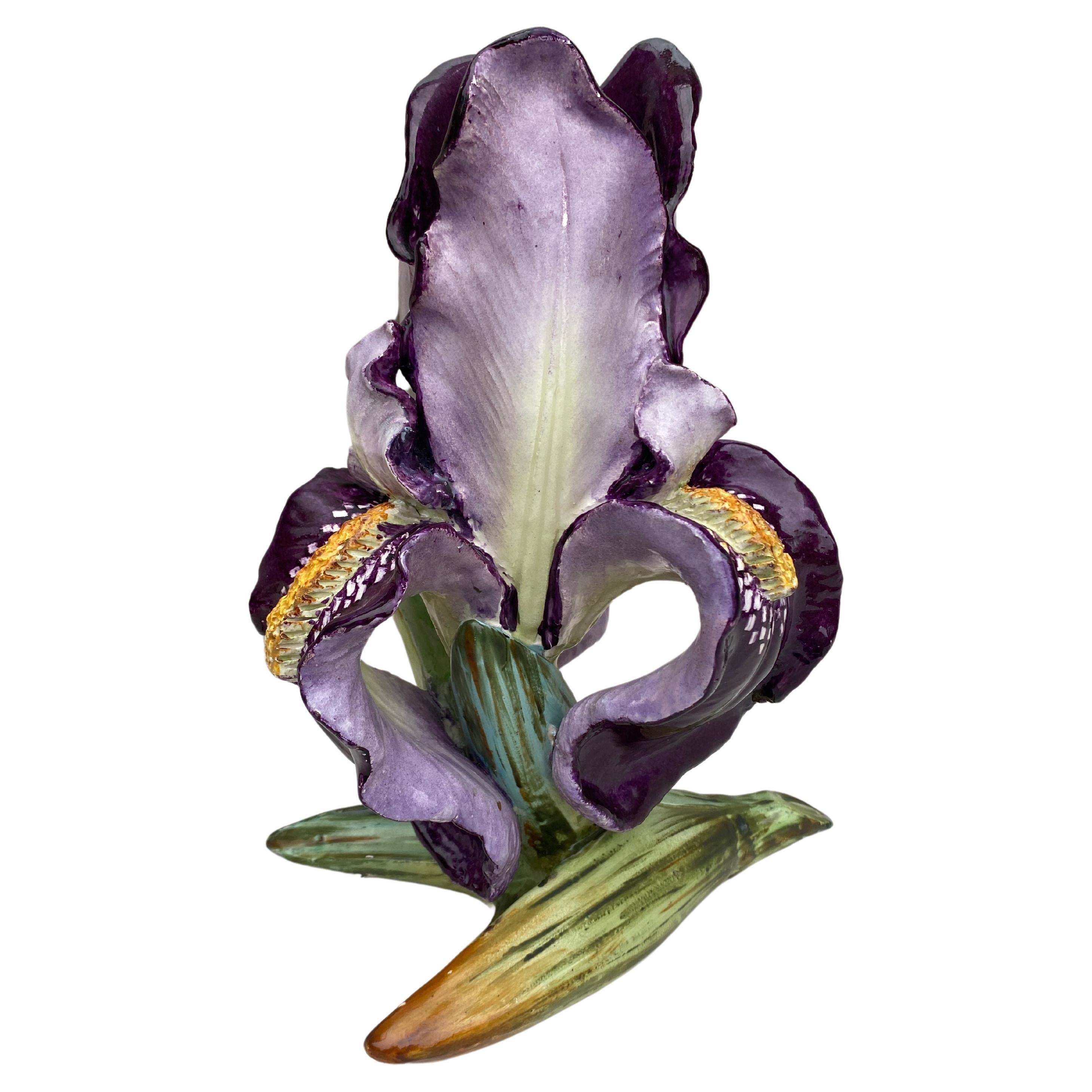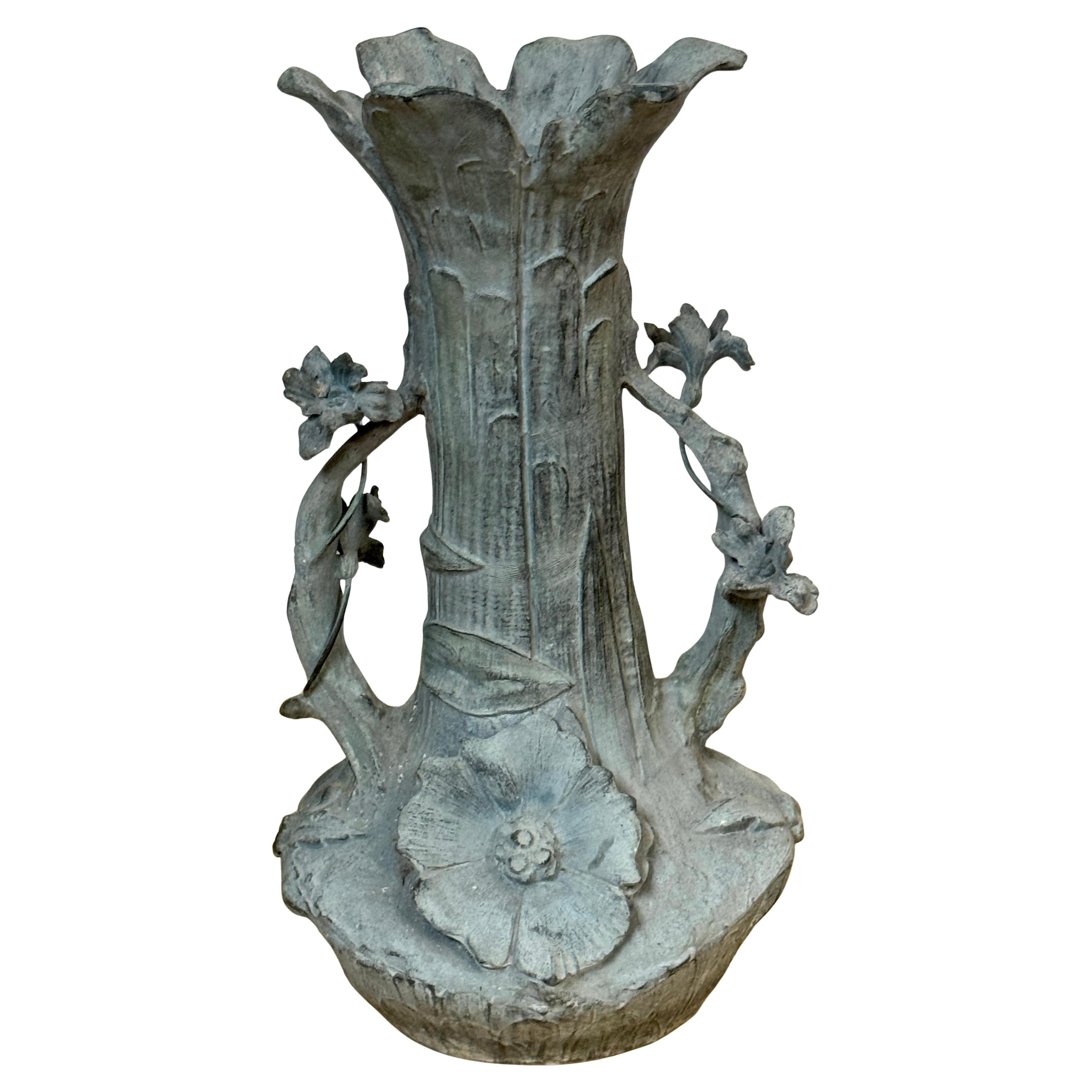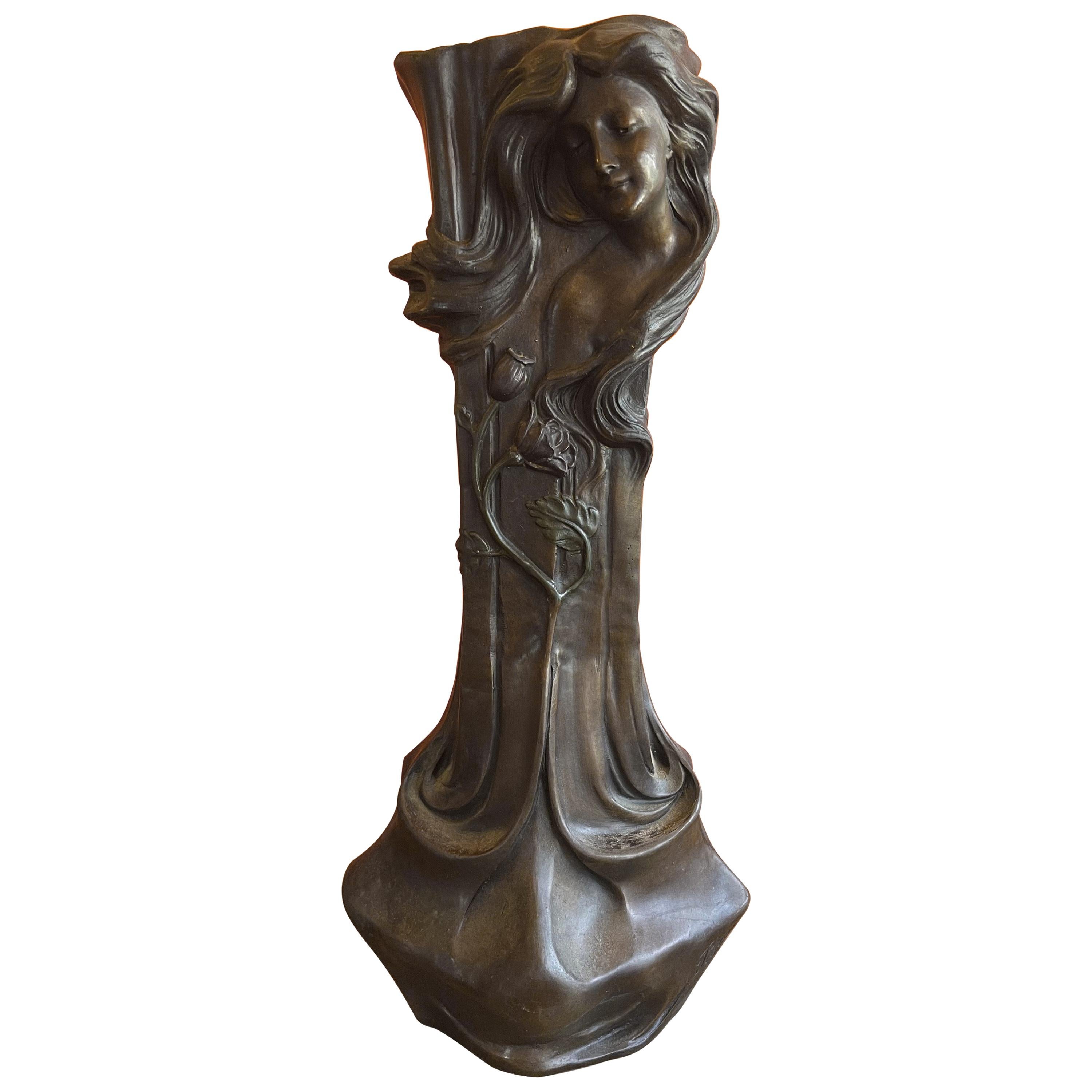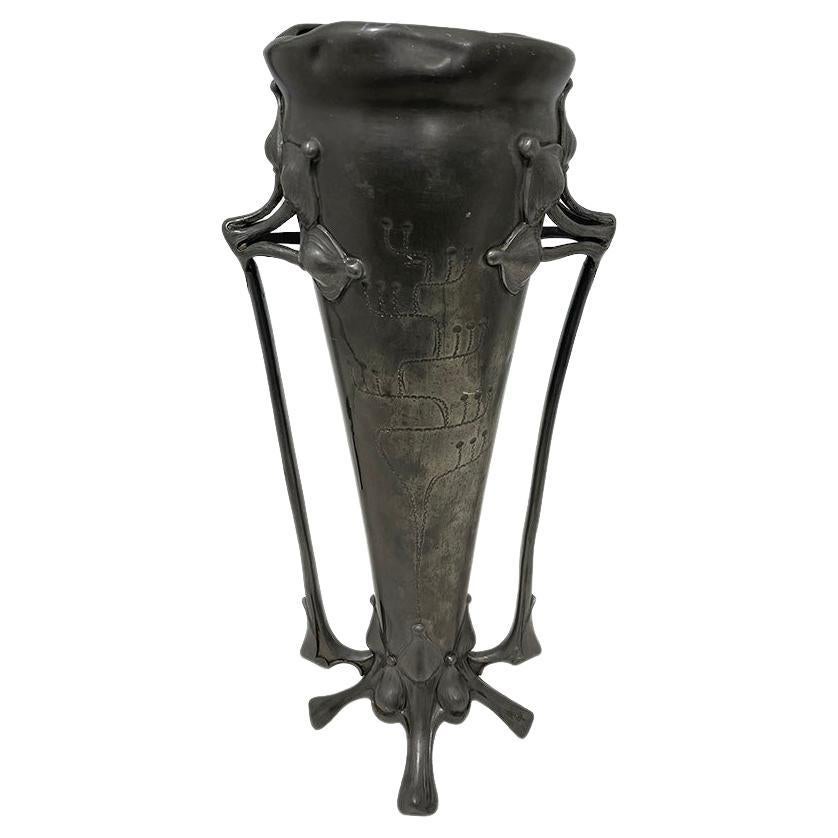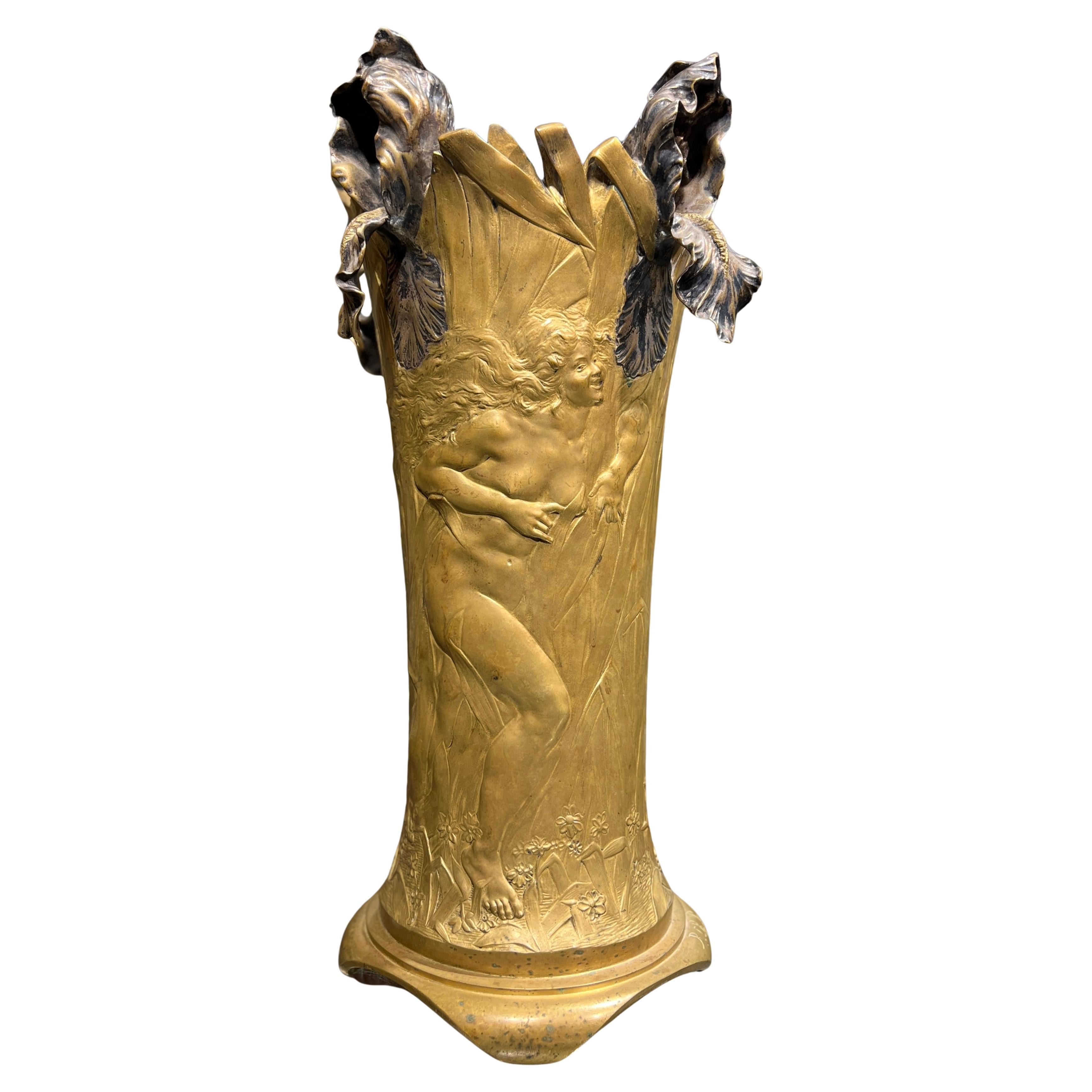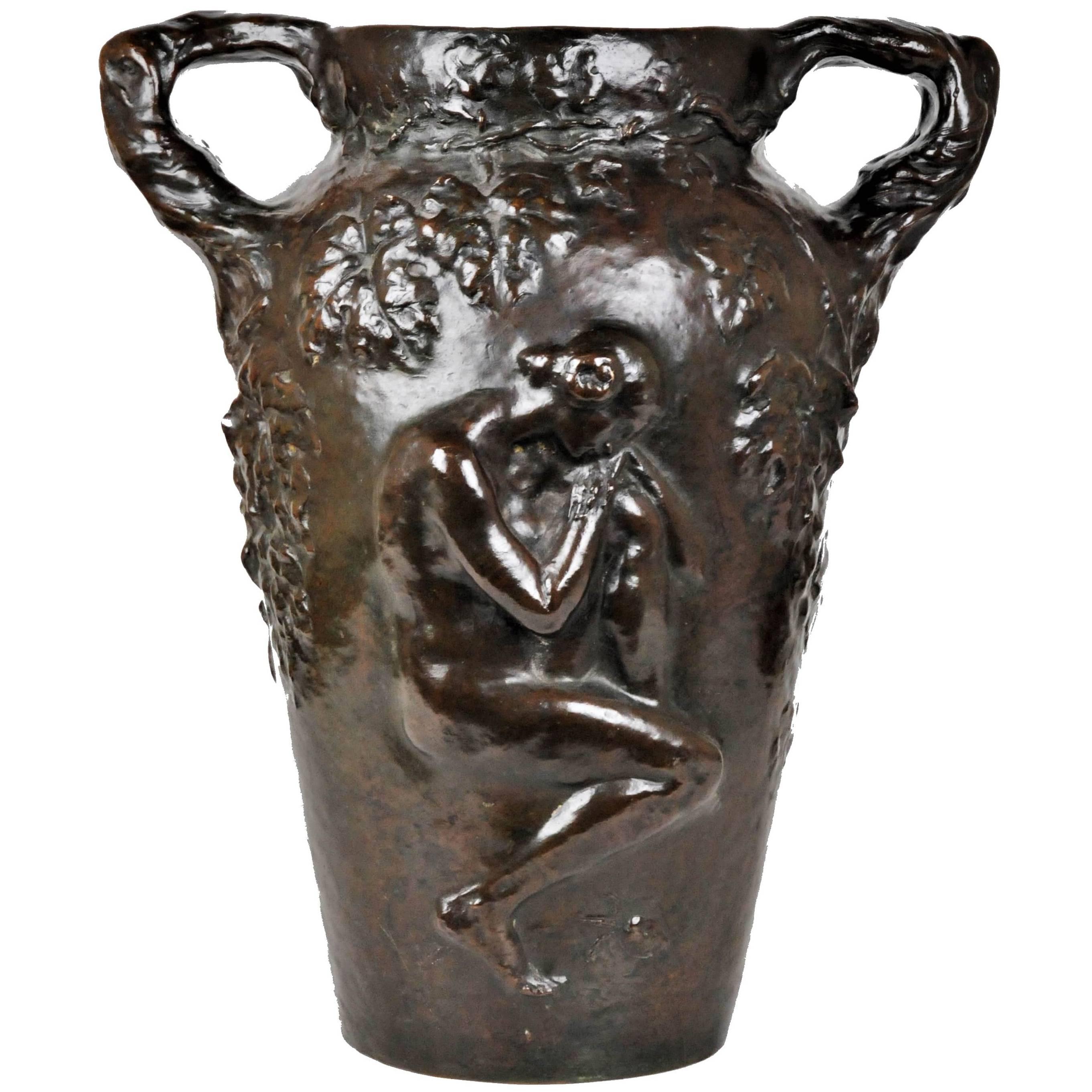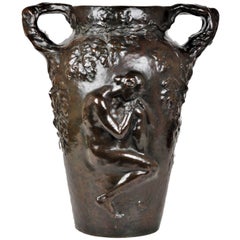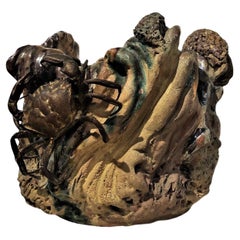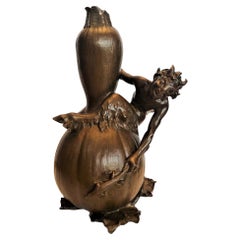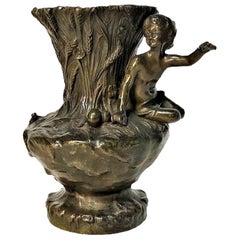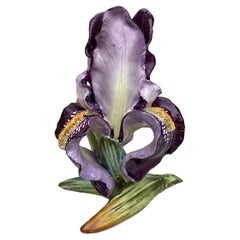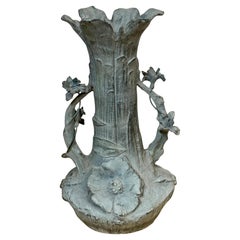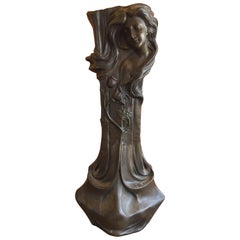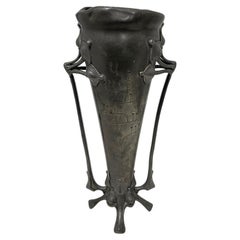Items Similar to French Art Nouveau Patinated Bronze Sculptural Iris Vase, ca. 1900
Want more images or videos?
Request additional images or videos from the seller
1 of 13
French Art Nouveau Patinated Bronze Sculptural Iris Vase, ca. 1900
$1,600
£1,203.85
€1,390.47
CA$2,261.22
A$2,453.77
CHF 1,300.28
MX$30,094.24
NOK 16,090.87
SEK 15,205.02
DKK 10,380.58
About the Item
ABOUT IRIS
The iris is a special and mysterious flower. Not only because of its striking appearance, but also from an artistic and historical point of view. It is also like a work of art, as though created by Mother Nature. The unique leaves of this plant not only create wonderful shadow casts, but also look as if they were painted by hand. It's no wonder that iris acts as the muse for countless artists, and can be seen in many famous works of art.
The iris was first spotted in the time of Pharaoh Thutmose, in 1504 BC. He had the iris inscribed into the wall reliefs of a temple as a sign of his power, as well as decorating his sceptre with motifs of the flower. Since then, the iris has been a symbol of victory in Egypt. But the symbolism of the iris goes further than that. In Japan, the flower represents courage and is the symbol of the boys' festival. In Islamic cultures, the iris is a symbol of prosperity. In Europe, the flower was a popular weapon symbol in the Middle Ages and stood for chivalry. And in Christianity, the iris was seen as a symbol of the trinity because of its three-part flowers. With more than 300 varieties, the iris is now the most popular flower among growers and gardeners following the rose.
Countless artists use the iris in their works and the flower is present in all eras. You can see the flower on furniture, vases, jewelry, fabrics, sculptures, coats of arms and much more. Did you know that the iris is also called the sword lily? It's not a coincidence that it used to symbolize physical and emotional pain and suffering caused by a weapon. We also see the flower in religious art, where it's often associated with Mary and Jesus. The iris is also associated with the Greek goddess Iris, where the flower symbolizes reconciliation and divine messages. This is also reflected in many paintings.
Finally, the iris is also visible in Dutch and Flemish still-life paintings. This can be in a religious form, incorporated into an object or as a decorative flower.
In the Art Nouveau art movement, the iris (along with other plants, such as the birch) was often used as an expression of feminine beauty. With its almost otherworldly appearance, the iris is perfectly suited to the Art Nouveau aesthetic and is featured in many well-known works of art. The poet of that era, Hermann Hesse dedicated his fairy tale "Iris" (1916) to his wife. In the first sentence of the story, the poet made it very clear that the flower refers to feminine beauty.
- Dimensions:Height: 10.75 in (27.31 cm)Width: 8.5 in (21.59 cm)Depth: 8.5 in (21.59 cm)
- Style:Art Nouveau (Of the Period)
- Materials and Techniques:Bronze,Cast
- Place of Origin:
- Period:1900-1909
- Date of Manufacture:ca. 1900
- Condition:Wear consistent with age and use. We make our best effort to provide a fair and descriptive condition report. Please examine photos attentively, as they are an integral part of the description. Send us a message to request more details or discuss price.
- Seller Location:New York, NY
- Reference Number:1stDibs: LU2819331463462
About the Seller
5.0
Gold Seller
Premium sellers maintaining a 4.3+ rating and 24-hour response times
Established in 1993
1stDibs seller since 2017
85 sales on 1stDibs
Typical response time: 8 hours
- ShippingRetrieving quote...Shipping from: New York, NY
- Return Policy
Authenticity Guarantee
In the unlikely event there’s an issue with an item’s authenticity, contact us within 1 year for a full refund. DetailsMoney-Back Guarantee
If your item is not as described, is damaged in transit, or does not arrive, contact us within 7 days for a full refund. Details24-Hour Cancellation
You have a 24-hour grace period in which to reconsider your purchase, with no questions asked.Vetted Professional Sellers
Our world-class sellers must adhere to strict standards for service and quality, maintaining the integrity of our listings.Price-Match Guarantee
If you find that a seller listed the same item for a lower price elsewhere, we’ll match it.Trusted Global Delivery
Our best-in-class carrier network provides specialized shipping options worldwide, including custom delivery.More From This Seller
View AllCharles Vital-Cornu, French Art Nouveau Bronze Sculptural Floral Vase, 1900s
By Charles Vital-Cornu
Located in New York, NY
Charles Vital-Cornu (French, 1851 - 1927), Jouffroy’s and Pils’ pupil, he acquired a skillfulness mastery in carving marbles and producing bronzes. He used several patinas in his production. Indeed, if his pieces' embodiments are often golden-brown colored, the hollow part are darker. His figures, hands, faces, and bodies are of a great quality.
Charles Vital-Cornu had participated in numerous annual ‘‘Salons’’ organized in Paris by ‘‘la Société des Artistes Français’’ where he got several awards, such as a mention of Honor in 1880 and 1881, a third class medal in 1882, a travelling grant in 1883, a second class medal in 1886, a bronze medal at the 1889 World Fair and, finally, a silver medal at the 1900 World Fair at the Grand palace...
Category
Antique Early 1900s French Art Nouveau Vases
Materials
Bronze
$4,675 Sale Price
44% Off
French Art Nouveau Iridescent Stoneware & Bronze Vase or Cachepot, ca. 1900s
Located in New York, NY
French Art Nouveau
Ocean Life Theme
Vase Cachepot
Iridescent Stoneware & Patinated Bronze Crab Appliqué
ca. 1900s
ABOUT
We present here a most unusual and utterly decorative Fren...
Category
Antique Early 1900s French Art Nouveau Vases
Materials
Stoneware
Franz Xavier Bergmann, Sculptural Bud Vase, Vienna Bronze, circa 1900
By Franz Bergmann
Located in New York, NY
Dimensions
Height: 7.25 inches
Width: 5.25 inches
Depth: 4.5 inches.
Markings
Fully marked on the bottom with a "B" in an urn-shaped cartouche (for “Bergmann”), and “GESHUTZED” (German: “PROTECTED).
ABOUT
What distinguishes this unique bud vase from others is a perfect synthesis of a utilitarian object and a Fine sculpture. It is not only the amazing subtlety and taste of the author’s artist skills, but an extraordinary design and an absolutely outstanding original plot. Designed for a single flower only, it is nonetheless a very complex and multifaceted composition filled with warm humor and fantasy. Sitting on a vessel shaped as a gourd, clasping its goat legs with hooves and holding on to the neck with one hand in order not to fall of it; a playful and mischievous faun holds by the tail a fleeing lizard with the other hand.
FRANZ XAVIER BERGMANN (Austrian, 1861–1936) was the owner of a Viennese foundry who produced numerous patinated and cold-painted bronze oriental, erotic and animal figures, the latter often humanized or whimsical, humorous objects d'art. Cold painted bronze refers to pieces cast in Vienna and then decorated in several layers with so-called dust paint; the expertise for the mix of this kind of paint has been lost. The color was not fired hence "cold painted". Mainly women working...
Category
Antique Early 1900s Austrian Jugendstil Vases
Materials
Bronze
French Beaux Arts, Patinated Bronze Figural Vase by A. Bofill, Ca. 1900
By Antoine Bofill
Located in New York, NY
Antoine Bofill (Spanish-French, 1875-1925) was a Spanish artist and member of the Animalier movement of the 19th century. Best known for his small, decorative bronze sculptures, Bofi...
Category
Antique Early 1900s French Beaux Arts Vases
Materials
Bronze
Japanese Art Nouveau Meiji Period Patinated Bronze Vase, circa 1900
Located in New York, NY
Although unmarked, this rare and important, grand but at the same exquisite patinated bronze vase has just a very few little details, defying the shape of the handles, as well as the...
Category
Antique Early 1900s Japanese Art Nouveau Vases
Materials
Bronze
Japanese Meiji Era Bronze Lotus Leaf Bowl, Vide Poche, ca. 1900
Located in New York, NY
DIMENSIONS: Height: 4 inches Width: 6 inches Depth: 6 inches
ABOUT THE OBJECT
With the laconic Japanese-style Art Nouveau design, filled with symbolism and metaphorism, this multi-use bowl...
Category
Antique Early 1900s Japanese Art Nouveau Vases
Materials
Bronze
You May Also Like
Large French Majolica Iris Vase Massier, circa 1880
By Delphin Massier
Located in Austin, TX
Large French Majolica Iris Vase Massier, circa 1880.
Category
Antique 1880s French Art Nouveau Vases
Materials
Ceramic
Art Nouveau Floral Relief Vase in Cast Zinc, Attributed to Kayserzinn, C. 1900s
By Kayserzinn 1
Located in West Palm Beach, FL
Art Nouveau Floral Relief Vase in Cast Zinc, Attributed to Kayserzinn, Circa 1890
A richly detailed and sculptural Art Nouveau vase in cast zinc, attributed to the celebrated German...
Category
Early 20th Century German Art Nouveau Vases
Materials
Metal, Brass
Patinated Bronze Art Nouveau Vase with Maiden & Floral Design by Francesco Flora
Located in San Diego, CA
Gorgeous patinated bronze art nouveau vase with maiden & floral design by Francesco Flora, circa 1910s. The vase has wonderful detail and is in very go...
Category
Early 20th Century Japanese Art Nouveau Vases
Materials
Bronze
$2,000 Sale Price
20% Off
French Art Nouveau pewter vase, ca 1900
Located in Delft, NL
French Art Nouveau pewter vase, ca 1900
A French Art Nouveau vase, made of pewter in beautiful Art Nouveau scene of flowers, raised on 4 legs. A tapered, but rounded model with two ...
Category
Early 20th Century French Art Nouveau Vases
Materials
Pewter
Art Nouveau Gilt Bronze Flower Vase by Charles Raphael Peyre
Located in New York, NY
Beautiful Art Nouveau period gilt bronze flower by the French sculptor,
Charles Raphaël Peyre (1872-1949) measuring 19 inches tall with its original removeable metal liner. Signed.
Category
Early 20th Century French Art Nouveau Vases
Materials
Bronze
Early 20th century French Barbotine Wall Flower Vase, 1900s
By Delphin Massier
Located in LEGNY, FR
A very nice wall-mounted vase called a bouquetière in barbotine (earthenware) from the late 19th century.
In the Massier style, in imitation of a purple iris. Very good condition. Su...
Category
20th Century French Vases
Materials
Earthenware
More Ways To Browse
French Vase 1900
Antique Iris
Art Nouveau Vase Gold
Art Nouveau Vase Bronze
Iris Gold
Jesus And Mary
Iris Vase
Art Nouveau Iris
Mary With Jesus
Iris Goddess
Cachepot Blue White
Early 20th Century Chinese Planter Jardiniere
French Tole Jardiniere
Bird Planter
Black Chinese Planter
Cloisonne Planter
French Cast Iron Vases
White Ceramic Pots
